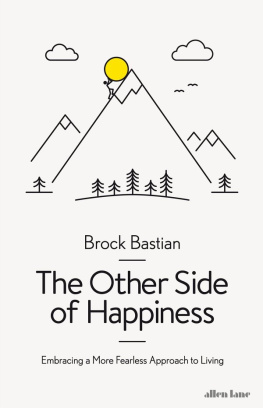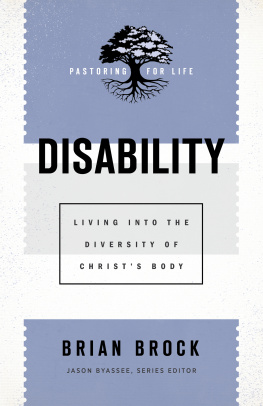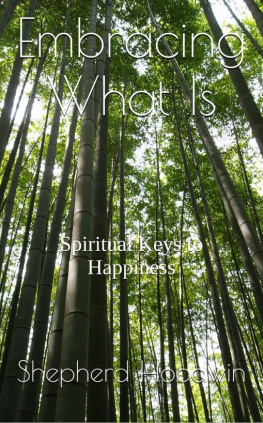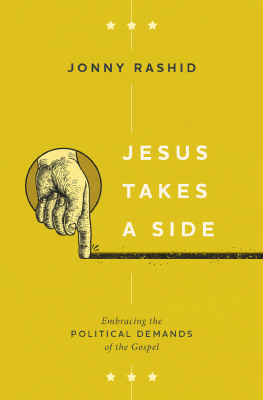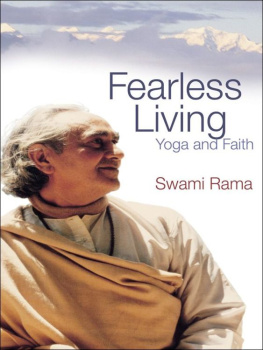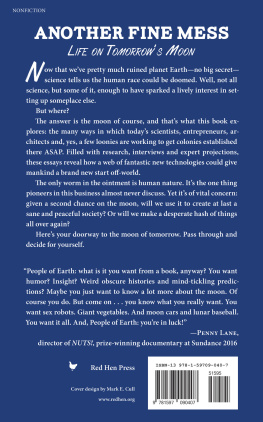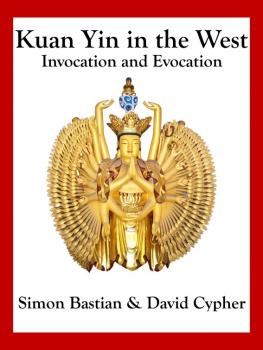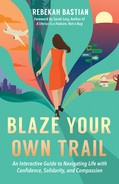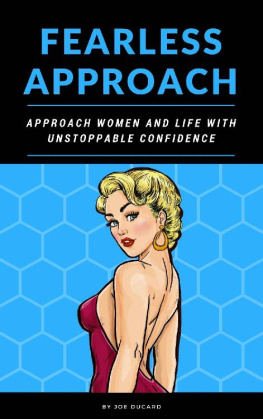Brock Bastian - The other side of happiness : embracing a more fearless approach to living
Here you can read online Brock Bastian - The other side of happiness : embracing a more fearless approach to living full text of the book (entire story) in english for free. Download pdf and epub, get meaning, cover and reviews about this ebook. year: 2018, publisher: Allen Lane, genre: Religion. Description of the work, (preface) as well as reviews are available. Best literature library LitArk.com created for fans of good reading and offers a wide selection of genres:
Romance novel
Science fiction
Adventure
Detective
Science
History
Home and family
Prose
Art
Politics
Computer
Non-fiction
Religion
Business
Children
Humor
Choose a favorite category and find really read worthwhile books. Enjoy immersion in the world of imagination, feel the emotions of the characters or learn something new for yourself, make an fascinating discovery.
- Book:The other side of happiness : embracing a more fearless approach to living
- Author:
- Publisher:Allen Lane
- Genre:
- Year:2018
- Rating:3 / 5
- Favourites:Add to favourites
- Your mark:
- 60
- 1
- 2
- 3
- 4
- 5
The other side of happiness : embracing a more fearless approach to living: summary, description and annotation
We offer to read an annotation, description, summary or preface (depends on what the author of the book "The other side of happiness : embracing a more fearless approach to living" wrote himself). If you haven't found the necessary information about the book — write in the comments, we will try to find it.
Brock Bastian: author's other books
Who wrote The other side of happiness : embracing a more fearless approach to living? Find out the surname, the name of the author of the book and a list of all author's works by series.
The other side of happiness : embracing a more fearless approach to living — read online for free the complete book (whole text) full work
Below is the text of the book, divided by pages. System saving the place of the last page read, allows you to conveniently read the book "The other side of happiness : embracing a more fearless approach to living" online for free, without having to search again every time where you left off. Put a bookmark, and you can go to the page where you finished reading at any time.
Font size:
Interval:
Bookmark:


Positivity has become the new crack of the upwardly mobile, and the new pill for the downtrodden and depressed. Coaches, consultants and psychologists have been pushing the message that to live well we need to seek out the positive and reframe the negative. In todays world, feeling happy is no longer simply a state of mind; it has become a marker of mental health and success. On the flip side, pain and sadness are viewed as signals of failure and of sickness: if we are not happy then there is something wrong with us and we need to fix it. It is no wonder that the painkilling and antidepressant markets, already worth billions of dollars, continue their rapid expansion. We have come to treat even commonplace experiences of pain and sadness as pathological, as things that need to be medicated and eradicated.
Confusion arises because, despite our comfortable, first-world lives, we cannot free ourselves of pain or sadness, though we have never before had access to the kind of analgesic technology that we have today. Popping a pill to remedy physical or emotional discomfort has become the norm, yet this approach is simply not working. As pain medication gets stronger we see pain-related problems rising. As antidepressant use increases we find ourselves in the midst of a depression epidemic.
Our problem is not pain or sadness. It is how we have come to orient ourselves to these sensory and emotional events. We are sold the message that our negative or uncomfortable experiences in life are inconvenient, unnecessary, that they are of no value to us and we should avoid them at all costs.
This sentiment is well captured by the slogan of a major brand of painkillers in Australia Panadol: When pain is gone, life takes its place. Its an excellent marketing strategy: medication can return us to normal and save us from needlessly unpleasant experiences. While this statement may be apt for those who experience chronic or unremitting pain (although these are not usually the kind of people who are popping Panadols), it casts all pain as counterproductive to life. With slogans such as this it is no wonder we have come to believe our lives are supposed to be pain free. Sold on this idea, we see happiness as a natural state, the expected equilibrium. Yet, the harder we try to reach this plateau of happiness and eradicate all suffering, the more inadequate we may be led to feel.
By devaluing and avoiding our negative experiences we leave ourselves with only one pathway to finding happiness the pursuit of pleasure. We seek out feel-good experiences, always on the lookout for the next holiday, purchase or culinary experience. This approach to happiness is relatively recent; it depends on our capacity both to pad our lives with material pleasures and to feel that we can control our suffering. Painkillers, as we know them today, are a relatively recent invention and access to material comfort is now within reach of a much larger proportion of the worlds population. These technological and economic advances have had significant cultural implications, leading us to see our negative experiences as a problem and maximizing our positive experiences as the answer. Yet, through this we have forgotten that being happy in life is not just about pleasure. Comfort, contentment and satisfaction have never been the elixir of happiness. Rather, happiness is often found in those moments we are most vulnerable, alone or in pain. Happiness is there, on the edges of these experiences, and when we get a glimpse of that kind of happiness it is powerful, transcendent and compelling.
Drawing on this perspective, we can begin to examine what is in many cultures today an under-explored path to well-being. Pleasant experiences are necessary but not sufficient to produce happiness. Experiencing pleasure is an important pathway to finding happiness, but pleasure alone will never achieve this goal. In order to find true happiness we need to embrace a more fearless approach to living, we need to approach our negative experiences on the front foot we need to experience pain. By pain, I mean all things that are not pleasure. I mean the anxiety of a significant challenge and the loneliness of failure. I mean the sadness of a relationship breakup, or the fear of our own mortality. I also mean the physical repercussions that we may experience in a range of contexts, some of which are chosen and some of which are not. These experiences not only all hurt, they also trigger similar neural regions of the brain and, as I will argue, play into our overall happiness in similar ways. Drawing on recent findings, including those from my own research laboratory, and current theories within psychology, anthropology and neuroscience, I will aim to show that pain and suffering are neither antithetical to happiness nor simply incidental to it. They are necessary for happiness. Without pain, there is no way to achieve real happiness.
One of the key reasons we fail to see the relationship between pain and happiness is that we no longer see pain clearly; we have developed pain blind spots. If I asked you to stop and think about your last painful experience I bet you would think of some kind of illness, injury or significant trauma. I also bet you would think of a physical experience rather than an emotional event. This illustrates two shortcomings in how we view pain.
The first is that we have developed a narrow view of pain we tend to limit it to physical experiences alone. This view was also held by early.
The second shortcoming is that we regard pain as a problem. We see it as intimately tied to significant physical or psychological harm, rather than as a distinct psychological state. Just because an experience is negative or hurts us does not mean it is harmful the impact of physical, social or emotional pain as psychological experiences that are devoid of physical or psychological harm.
Our tendency to regard pain as a problem also limits our capacity to see it as occurring in the context of experiences we might broadly refer to as positive. This is perhaps why some women seem to forget the trauma of childbirth, or why runners or chilli lovers rarely refer to running or eating Mexican food as painful. The fact is, pleasure and pain frequently co-exist. Not only do they co-exist, but they can often be dependent on one another. Yet, we fail to see this relationship and therefore we become blind to the fact that pain contributes to positive outcomes and sometimes we may even enjoy these painful aspects.
Our tendency to limit pain to physical injury or to focus on its more extreme and harmful manifestations leaves us with a gap in our terminology. We have very few (if any) of what are called hedonically neutral experiences in life. Even if only in small ways, our various experiences tend to be to some extent positive or negative. This is why Aristotle carved the world into broad categories of pleasure and pain. Although pleasure and pain frequently occur together, we can still categorize the various elements of every experience in these two ways. This means that whether it is a broken toe or a broken heart, the irritation of an itch or the anxiety we feel before speaking in public, the negative elements of these experiences should all be broadly considered under the category of pain. Yet, we appear to feel some resistance to this flippant use of the term. It is perhaps for this reason that more frequently we refer to these experiences as unpleasant. Of course, I could have written a book about unpleasantness instead of pain. But I find this deeply dissatisfying, and I also think it is exactly this approach which has caused us to become allergic to pain. Defining a whole set of experiences based on the absence of pleasure suggests such experiences are inherently lacking; specifically, they are lacking in pleasure. Moreover, how can we talk about the benefits of pain when it is simply defined by the absence of pleasure? We need to positively identify our negative experiences, rather than define them as the absence of something better. We need a term that captures the full array of our negative experiences and draws them together under a meaningful umbrella. For this, the most accurate term is pain.
Font size:
Interval:
Bookmark:
Similar books «The other side of happiness : embracing a more fearless approach to living»
Look at similar books to The other side of happiness : embracing a more fearless approach to living. We have selected literature similar in name and meaning in the hope of providing readers with more options to find new, interesting, not yet read works.
Discussion, reviews of the book The other side of happiness : embracing a more fearless approach to living and just readers' own opinions. Leave your comments, write what you think about the work, its meaning or the main characters. Specify what exactly you liked and what you didn't like, and why you think so.

